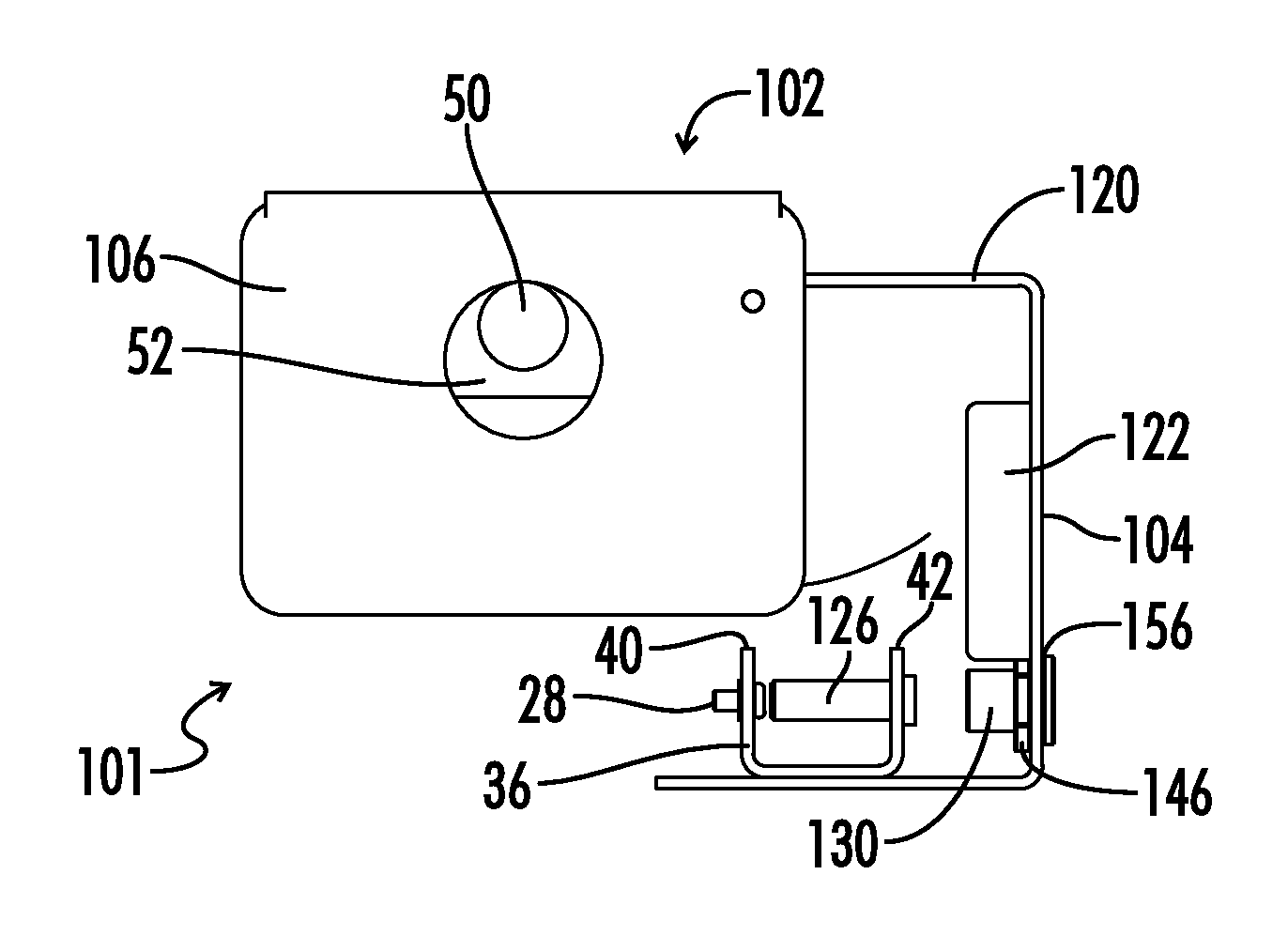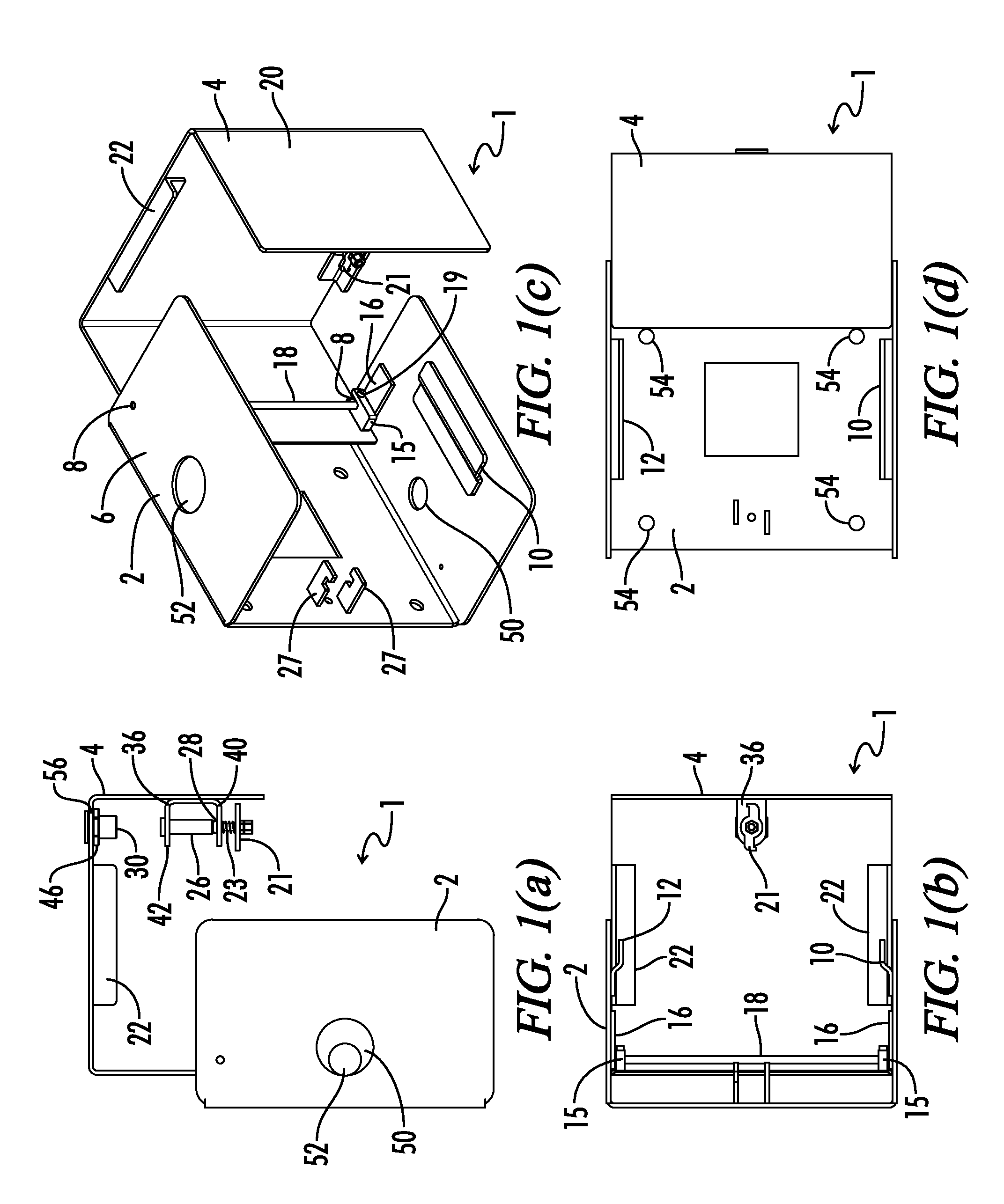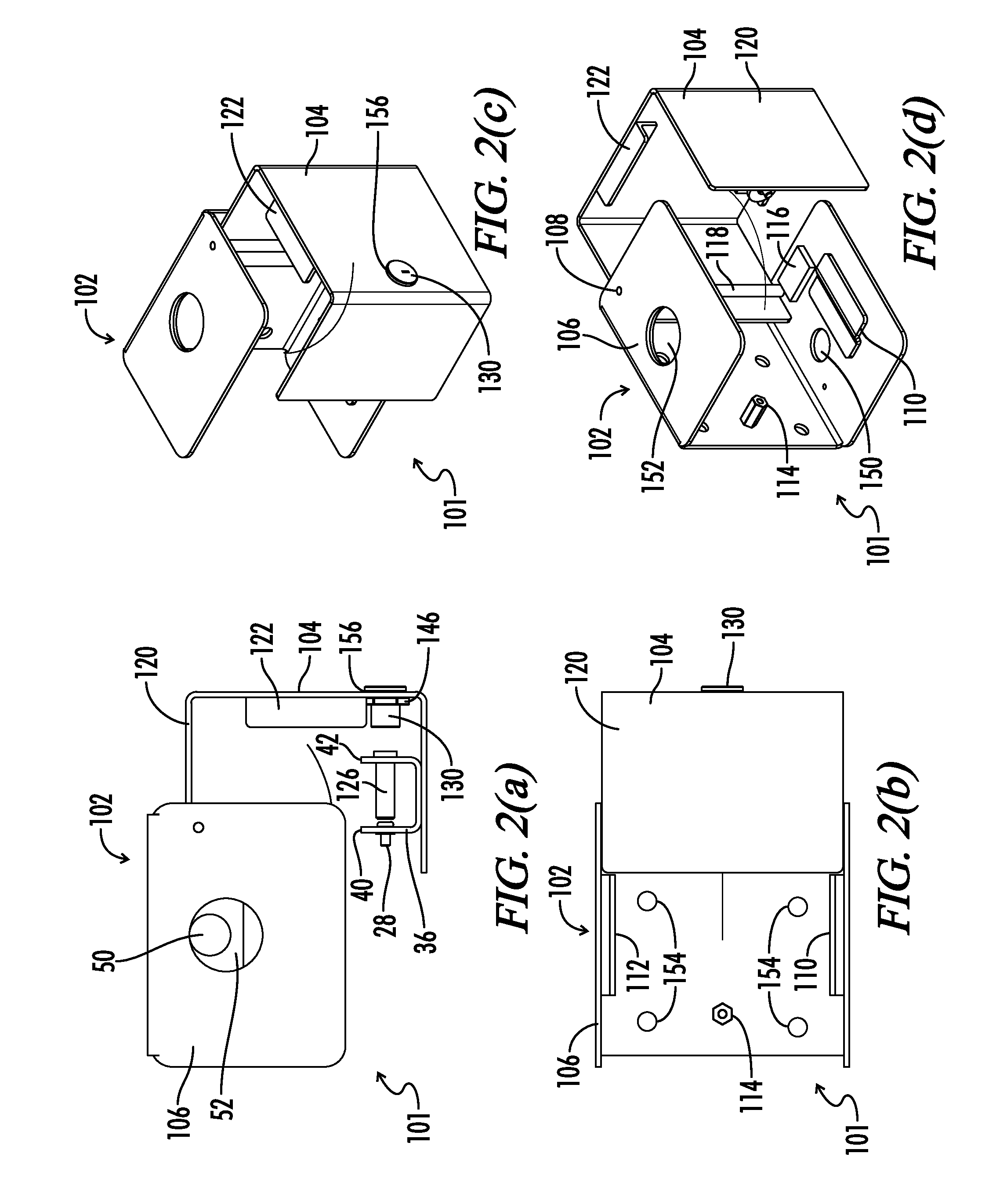Theft deterrent enclosure
a technology of enclosure and anti-theft, which is applied in the direction of keyhole guards, locking devices, transportation and packaging, etc., can solve the problems of cable television providers facing even more substantial losses of revenue, cable box theft, and enclosures of the past that protect cable boxes and telephone lines have proved deficient in a number of respects, so as to prevent cable box theft, reduce trouble calls, and minimize signal leakage
- Summary
- Abstract
- Description
- Claims
- Application Information
AI Technical Summary
Benefits of technology
Problems solved by technology
Method used
Image
Examples
Embodiment Construction
[0039]FIGS. 1(a-d) are top (a), isometric (b), side (c) and front views (d) of a preferred embodiment 1 of the present invention. The unique locking mechanisms and robust housing of the enclosure 1 shown reduce the risk of authorized access to the contents of the enclosure 1. The preferred embodiment shown in the figures consists of a wrapper assembly 2 and a door assembly 4. The wrapper assembly 2 includes a wrapper housing 6 and the door assembly 4 includes a door housing 20 which serve to mount the components of the assemblies 2 and 4 and protect the contents of the enclosure 1. The wrapper housing 6 and the door housing 20 are preferably constructed from stainless steel.
[0040]The door assembly 4 is pivotally connected to the wrapper assembly 2 with the pivotal attachment consisting of a pin 18 having two ends 8 affixed to the wrapper assembly 2 and a pair of hinge blocks 15 attached to the top and bottom of the door assembly. The hinge blocks 15 have slots that are dimensioned t...
PUM
 Login to View More
Login to View More Abstract
Description
Claims
Application Information
 Login to View More
Login to View More - R&D
- Intellectual Property
- Life Sciences
- Materials
- Tech Scout
- Unparalleled Data Quality
- Higher Quality Content
- 60% Fewer Hallucinations
Browse by: Latest US Patents, China's latest patents, Technical Efficacy Thesaurus, Application Domain, Technology Topic, Popular Technical Reports.
© 2025 PatSnap. All rights reserved.Legal|Privacy policy|Modern Slavery Act Transparency Statement|Sitemap|About US| Contact US: help@patsnap.com



